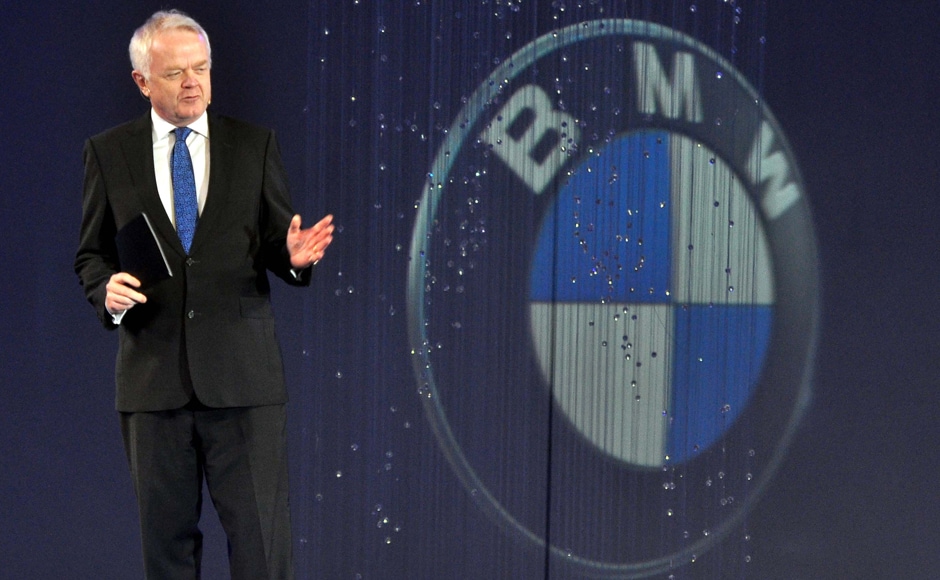The China Factor: How Market Dynamics Affect BMW, Porsche, And Other Automakers

Table of Contents
The Immense Size and Growth of the Chinese Automotive Market
The sheer scale of the Chinese car market is staggering. Its year-on-year growth rates, while fluctuating, consistently dwarf those of other major markets. This makes China an undeniable key player influencing global sales figures for luxury brands like BMW and Porsche. The implications for these automakers are profound, demanding a keen understanding of the unique nuances of this market.
- China's contribution to global automotive sales: China accounts for a substantial portion of global automotive sales, making it a crucial market for any automaker aiming for significant global market share. Ignoring the Chinese market is simply not an option for companies like BMW and Porsche.
- Growth segments within the Chinese market: While the overall market is substantial, specific segments like electric vehicles (EVs) and SUVs exhibit particularly explosive growth, demanding targeted strategies from automakers. This dynamic necessitates a shift in production and marketing towards these rapidly expanding sectors.
- Shifting consumer preferences in China: Chinese consumer preferences are evolving rapidly, influencing vehicle design, features, and technological integration. Understanding these shifting trends is critical for success. Luxury brands must adapt to these changing tastes to remain competitive.
- Comparison of Chinese market growth with other major markets: Comparing China's automotive market growth to that of the US, Europe, and other major regions highlights its exceptional pace and influence on the global automotive industry. This rapid expansion underscores the strategic importance of China for global automakers.
Navigating Intense Competition in China: Domestic and International Players
The Chinese automotive landscape is fiercely competitive. While established international players like BMW and Porsche hold significant presence, the rise of powerful domestic brands like BYD, NIO, and XPeng presents a formidable challenge. These Chinese automakers are rapidly gaining market share, leveraging technological advancements and aggressive pricing strategies.
- Profiles of key Chinese automotive competitors and their market strategies: Understanding the strategies of BYD, with its strong focus on EVs and battery technology, or NIO's innovative battery-as-a-service model, is crucial for international competitors. This necessitates a deep dive into their competitive advantages.
- Analysis of pricing strategies and the impact of price wars: The Chinese market is witnessing intense price competition, particularly in the EV segment. Understanding these pricing dynamics is key for optimizing profitability and maintaining competitiveness.
- The role of technological innovation and electric vehicle development: Technological innovation, especially in electric vehicle technology, is a major battleground in China. Automakers must invest heavily in R&D to keep pace with the rapid advancements being made by Chinese competitors.
- Discussion of joint ventures and partnerships between international and Chinese automakers: Many international automakers are forging joint ventures and partnerships with Chinese companies to gain access to the market, technology, and local expertise. This collaborative approach is becoming increasingly crucial.
Supply Chain Disruptions and Geopolitical Risks
The reliance on Chinese manufacturing for various automotive components presents significant supply chain risks. Geopolitical factors, including trade tensions and evolving regulations, further complicate the situation. This makes supply chain diversification and risk mitigation paramount for companies like BMW and Porsche.
- Dependency on Chinese manufacturing for certain components: Many automotive components are sourced from China, creating a dependency that can be vulnerable to disruptions. Diversification of sourcing is vital to mitigate these risks.
- Potential disruptions caused by trade disputes or political instability: Trade wars or political instability can severely impact the flow of goods and components, causing production delays and financial losses. Robust contingency planning is necessary.
- Strategies for mitigating supply chain risks, including diversification: Automakers must actively diversify their supply chains, reducing reliance on single sourcing and geographical concentration. This is crucial for long-term stability.
- The impact of regulatory changes in China on automotive production and sales: China's evolving regulatory environment, including emission standards and safety regulations, directly affects automotive production and sales. Staying informed about these changes is essential.
The Electrification Push and China's Role in EV Development
China is at the forefront of the global electric vehicle revolution. Its aggressive promotion of EVs through government incentives, investment in battery technology, and the development of charging infrastructure is impacting global automakers' strategies significantly.
- China's leading role in battery technology and EV manufacturing: China is a leading producer of EV batteries and components, giving Chinese automakers a significant competitive edge. This dominance impacts global supply chains and innovation.
- Government incentives and regulations promoting EV adoption: The Chinese government's support for EVs, including subsidies and stricter emission standards, accelerates adoption and creates a strong market demand.
- Strategies of BMW and Porsche regarding their EV offerings in the Chinese market: Both BMW and Porsche are investing heavily in their EV offerings tailored to the Chinese market, recognizing its pivotal role in the global EV landscape.
- Comparison of Chinese EV adoption rates with other global markets: China's EV adoption rate far surpasses many other countries, highlighting its influence on the global EV market and the urgency for international automakers to adapt.
Conclusion
The "China factor" is undeniably crucial for the future success of automakers like BMW and Porsche. The vast market size, intense competition, and rapid technological advancements necessitate carefully crafted strategies to thrive in this dynamic environment. Successfully navigating supply chain complexities and adapting to evolving consumer preferences are paramount for long-term success in this pivotal market.
Understanding the complexities of the China factor is vital for anyone following the automotive industry. Stay informed about the evolving market dynamics in China to gain a clearer picture of the future of BMW, Porsche, and the global automotive landscape. Further research into the China factor will help you fully grasp this critical market’s impact on the global automotive industry.

Featured Posts
-
 Pole Vault Powerhouse Duplantis Kicks Off Diamond League Season
May 11, 2025
Pole Vault Powerhouse Duplantis Kicks Off Diamond League Season
May 11, 2025 -
 More Rejected At The Border The Impact Of Enhanced Security Measures
May 11, 2025
More Rejected At The Border The Impact Of Enhanced Security Measures
May 11, 2025 -
 John Wick 5 Keanu Reeves Return Confirmed
May 11, 2025
John Wick 5 Keanu Reeves Return Confirmed
May 11, 2025 -
 City Name Michigan A Top Choice For College Students Nationwide
May 11, 2025
City Name Michigan A Top Choice For College Students Nationwide
May 11, 2025 -
 Mc Ilroy And Lowry Return To Defend Zurich Classic Championship
May 11, 2025
Mc Ilroy And Lowry Return To Defend Zurich Classic Championship
May 11, 2025
